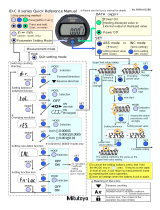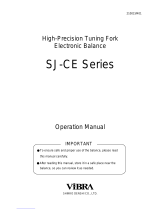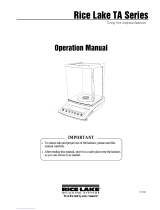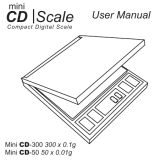
4
1. Introduction
This manual describes how the GX-A/GF-A series balance works and how to get the most out of it in
terms of performance. Read this manual thoroughly before using the balance and keep it at hand for
future reference.
This manual consists of the following five parts:
Basic operation ................................. Describes precautions on handling the balance, balance
construction and basic balance operation.
Adapting to the environment ·········· Describes response adjustment, calibration and calibration test.
Functions ........................................... Describes various functions of the balance.
Interface ···································· Describes the interface which transmits data and controls the
balance. To use it, need a personal computer or an optional
printer.
Maintenance ..................................... Describes maintenance, error codes, troubleshooting,
specifications and options.
1-1 Features
□ The balance has a self-check function that inspects the balance itself using electronically controlled
load (ECL) and evaluates performance. Read this manual thoroughly before using the balance and
keep it at hand for future reference.
□ The balance can detect impact applied to its mass sensor and display the level of that impact. ISD
(Impact Shock Detection).
□ Continuous change of the balance can be calculated as flow rate, displayed and output. FRD :( Flow
Rate Display).
□ The balance is equipped with a data memory function, which can record weighing value, calibration
result, and multiple unit mass (mass per sample in counting mode) (Up to 200 items are stored for
weighing value).
□ The GX-A series has automatic self calibration using the internal mass, adapting to temperature
changes, setting time and interval time.
□ Good laboratory practice (GLP) / Good manufacturing practice (GMP) data can be output using the
RS-232C serial interface.
□ A built-in clock and calendar that can add the time and date to the output data.
□ Comparator Indicators, displaying the comparison results with HI OK LO .(Depending on the
setting, 5-step comparison is also possble.)
□ Capacity Indicator, displaying the weight value in percentage relative to the weighing capacity.
□ Hold Function, provided for weighing a moving object such as an animal.
□ Underhook, for measuring density and weighing magnetic materials.
□ Users of the balance can be limited by setting a password (Password lock function).
□ The balance is equipped with an RS-232C serial interface and a USB interface to communicate with a
computer. Windows computer using the Windows communication tools software (WinCT) make
building a system very easy. The latest Win-CT software can be downloaded from the A&D website.
Windows is the registered trademark of the Microsoft Corporation.
□ A small breeze break is included with the model featuring a minimum display of 0.001g.































